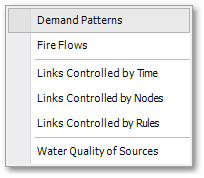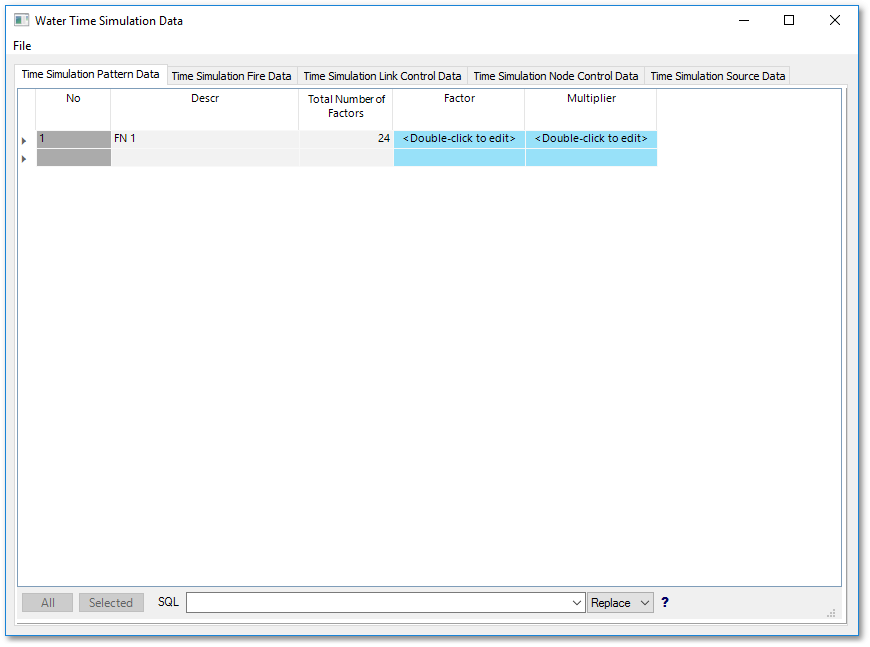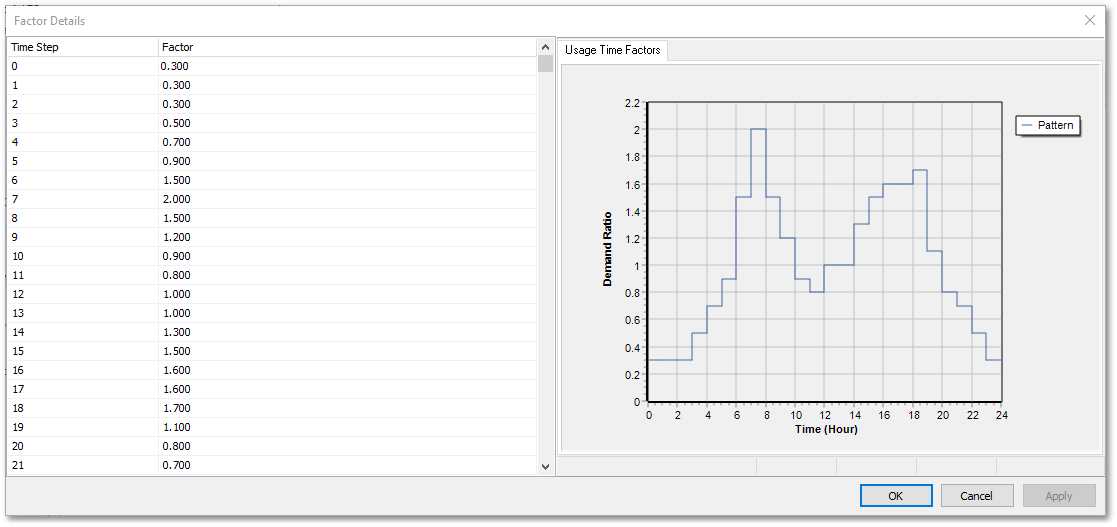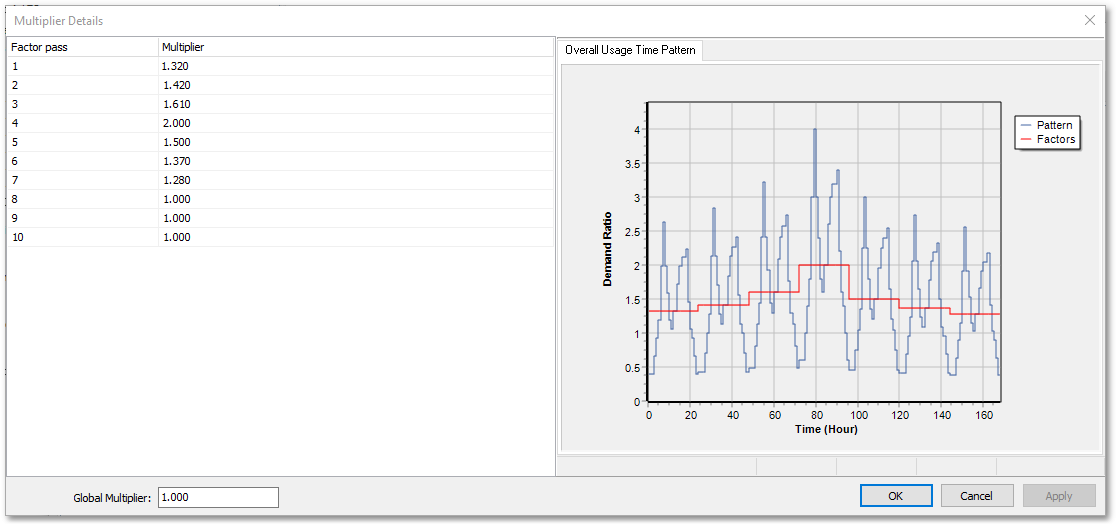The Water Time Simulation Data table is accessed by selecting Simulation Data > Simulation Tables > Time Patterns from the main menu.

The Time Simulation Data table consists of various tabs to enter and define specific time simulation data.

On the Time Simulation Pattern Data tab of the Time Simulation Data table, up to 40 time patterns can be defined. The pattern number contained in the field No will automatically be incremented every time a new pattern is defined. Each pattern can be given a name identifier, as specified in the Descr field (default names are FN1, FN2, FN3, etc.).
Double-click on the above Factor field to open the Factor Details table.

In the above table, factors can be specified, which represent a time pattern of multipliers used to vary a quantity (such as water demand at a node) over time.
Time patterns can be associated with nodal water demands, energy price variations over time, reservoir head variations over time, and pumping speed schedules.
The first column in the Factor Details table lists the time (in hours) associated with each pattern time step. (The time interval for pattern time steps is set in the Times tab of the Time & WQ Simulation Settings dialog box). The number of rows in the table is equal to the number of pattern time intervals which can occur within the duration of the time simulation. For instance, if the duration is 48 hours and the pattern time step interval is 0.5 hours, there will be 48 / 0.5 = 96 rows in the table. The time pattern factors for the time steps can be entered in the Factor field.
It is not necessary to specify all 40 time patterns. Only as many time patterns as may be required (e.g. Numbers 1 to 3) need to be specified.
For each pattern specified, it is furthermore not necessary to specify a multiplication factor in all the rows (to be described in more detail below). If a time pattern repeats itself within the duration of the time simulation, only those factors required to describe the basic pattern need to be specified. For instance, if a 24-hour pattern repeats itself 7 times within a 168 hour simulation, only the first 24 rows need to be filled with values. The pattern will “wrap” around to its first period again when the simulation clock exceeds the number of periods in a pattern.
A Multiplier Details editor is available to further enhance this “wrap-around” procedure. With this editor, accessed by double-clicking on the Multiplier field of the Time Simulation Data table, the following can be set:

•A Global Multiplier can be set: This value will be applied to all the factors specified in the Time Pattern Table. The default is 1.00.
•A series of up to 10 Repeat Pass Multipliers can be specified for each of the patterns. The first Repeat Pass Multiplier is for the “First pass” of the pattern, i.e. for as long as the time simulation clock is less than the number of periods specified for the pattern. The 2nd Repeat Pass Multiplier is used when the pattern wraps around for the first time, back to its first period. The 3rd Repeat Pass Multiplier is used for the second wrap around, and so forth. If a pattern is repeated more than 10 times within the duration of the time simulation, the first Repeat Pass Multiplier is used again, followed by 2nd, then the 3rd, etc., if necessary.
This Global Multiplier and Repeat Pass Multipliers can be used, for instance, in the following way:
The duration of simulation is 168 hours, representing the peak week within a given year. Base demands, entered in the Tsim_Output field, as applied from the steady state data, is for the annual average daily demand (AADD).
The time pattern is specified only for 24 hours, and consists of 24 factors expressing the water demand in a given hour as a ratio of the average demand over an entire day (24-hour period). For hour 10, it may be, for instance, 1.3 x average for the entire day. If the peak week demand is (say) 1.5 times the annual average, the Global Multiplier can be used to specify this. The demand of the 7 days in the peak week can then be expressed as a ratio of the peak week demand, by using the 7 Repeat Pass Multipliers available, and may, for instance, be 0.7 0.8 1.2 1.6 1.2 0.8 0.7. The ultimate factor for determining the demand during the 10th hour of the 4th day would then be:
Base Demand (AADD) x Global Ratio (Peak Week Factor) x Repeat Pass 4 Multiplier (Day Factor) x Hour 10 factor (in Pattern)
= Base Demand x 1.5 x 1.6 x 1.3
= Base Demand x 3.12
At program start-up, the default values for time patterns are:
- Only Pattern No 1 specified,
- All factors for Pattern No 1 = 1.0,
- Global Multiplier = 1.0,
- All Repeat Pass Multipliers = 1.0.
(Time Pattern factors and multipliers are considered time/WQ simulation-specific data).